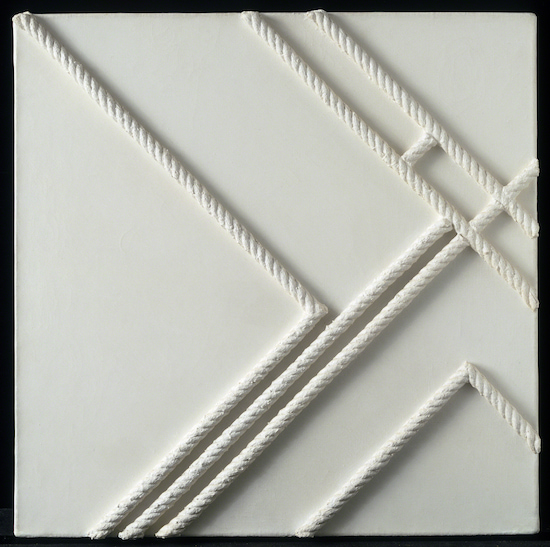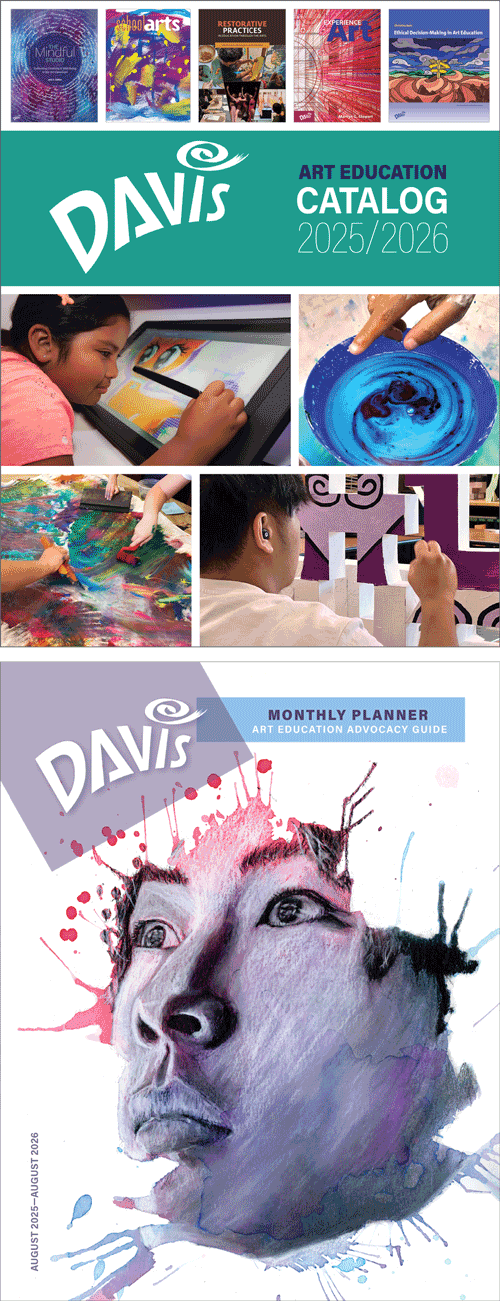Artist Birthday: Marlow Moss
Marlow Moss was a major figure in abstraction between the world wars. She was very active in the Abstraction-Creation group of abstract artists in the between-the-wars School of Paris, and she was active in developing abstraction based on the models of Russian Constructivism and Dutch Neo-Plasticism.
Artist birthday for 29 May: Marlow Moss (Marjorie Jewel, 1890–1958, Britain)
Marlow Moss (Marjorie Jewel) was an important figure in the abstraction movements of the School of Paris between world wars.
 |
| Marlow Moss, White with Rope, 1940. Oil on canvas with rope, 54 x 54 cm. The Museum of Modern Art, New York. © 2025 Artist or Estate of Artist. (MOMA-P3175) |
Moss and Piet Mondrian exchanged their ideas on Constructivism, often influencing each other. Moss devised the double line as an innovation to the Neo-Plasticist grid, often set at diagonals. Moss eventually did away with Mondrian's grid structure and use of primary colors in favor of exploiting the brightness of white as much as possible, combining several types of monochromatic canvases into all-white reliefs, such as White with Rope. She added lines of string or rope painted white exploiting the surface texture to express tension, instead of using color to do so. The rope at once blends with the canvas and distorts perception of the grid through its three-dimensional presence.
After the devastation of World War I (1914–1918) in Europe, some artists lost their enthusiasm for new experimentation. Cultural movements turned away from the vigorous avant-gardism of pre-war Paris toward the values of the classical tradition. This tendency towards classicism in art in the 1920s was a desire for stability after the upheavals of war. Despite this trend, official taste became less hostile toward modernism, and artists were able to consolidate and build upon the experimentation of the pre-war period. Artists were still drawn from all over Europe to Paris, assuring its status as the capital of the art world in the West.
Abstraction-Création was an association of abstract artists set up in Paris in 1931 with the aim of promoting abstract art through group exhibitions. The leaders of the movement were Auguste Herbin (1882–1960) and one of the founders of Dutch Constructivism (De Stijl) Georges Vantongerloo (1886–1965). The movement embraced all forms of abstraction in order to encourage modernism's continual growth, although the group tended to gravitate towards geometric abstractions such as Concrete Art, Constructivism and Neo-Plasticism. The group held regular exhibitions until 1936.
Marlow Moss was born Marjorie Jewel Moss in London. From an early age she was interested in many art forms, first studying piano. After recovering from tuberculosis, she turned to painting, attending the Slade School from 1917 to 1919. At that time she cut her hair short and began wearing men’s clothing. She self-taught herself in painting until 1927, when she moved to Paris.
In Paris, Moss studied at the Academy Modern under Cubist Fernand Léger (1881–1955), and she became part of the vibrant avant-garde artist community, choosing the path to abstraction. Her first Neo-Plasticist work she produced in 1929. She became a co-founder of Abstraction Creation in 1931 where she met De Stijl/Neo-Plasicist artist Piet Mondrian (1872–1944), whose work greatly impacted her own thereafter. She also met that year her life-long partner, Antoinette Nijhof-Wind (1897–1971).
Because Mondrian never taught Moss his pictorial process, she invented her own that was based more on mathematics than Mondrian’s intuitive reduction of forms to elemental shapes and colors. She deviated from Mondrian’s strict horizontal-vertical grid system, finding it too static. In 1939 she fled the invasion of France by the Nazis (being Jewish), abandoning her studio full of work in Paris that was destroyed by bombing during World War II (1939–1945). She returned to Britain where, after making the acquaintance of a naval engineer, she learned to work making metal sculptures. In the post-War years, she tried to recreated the works that had been destroyed during the war.

Comments